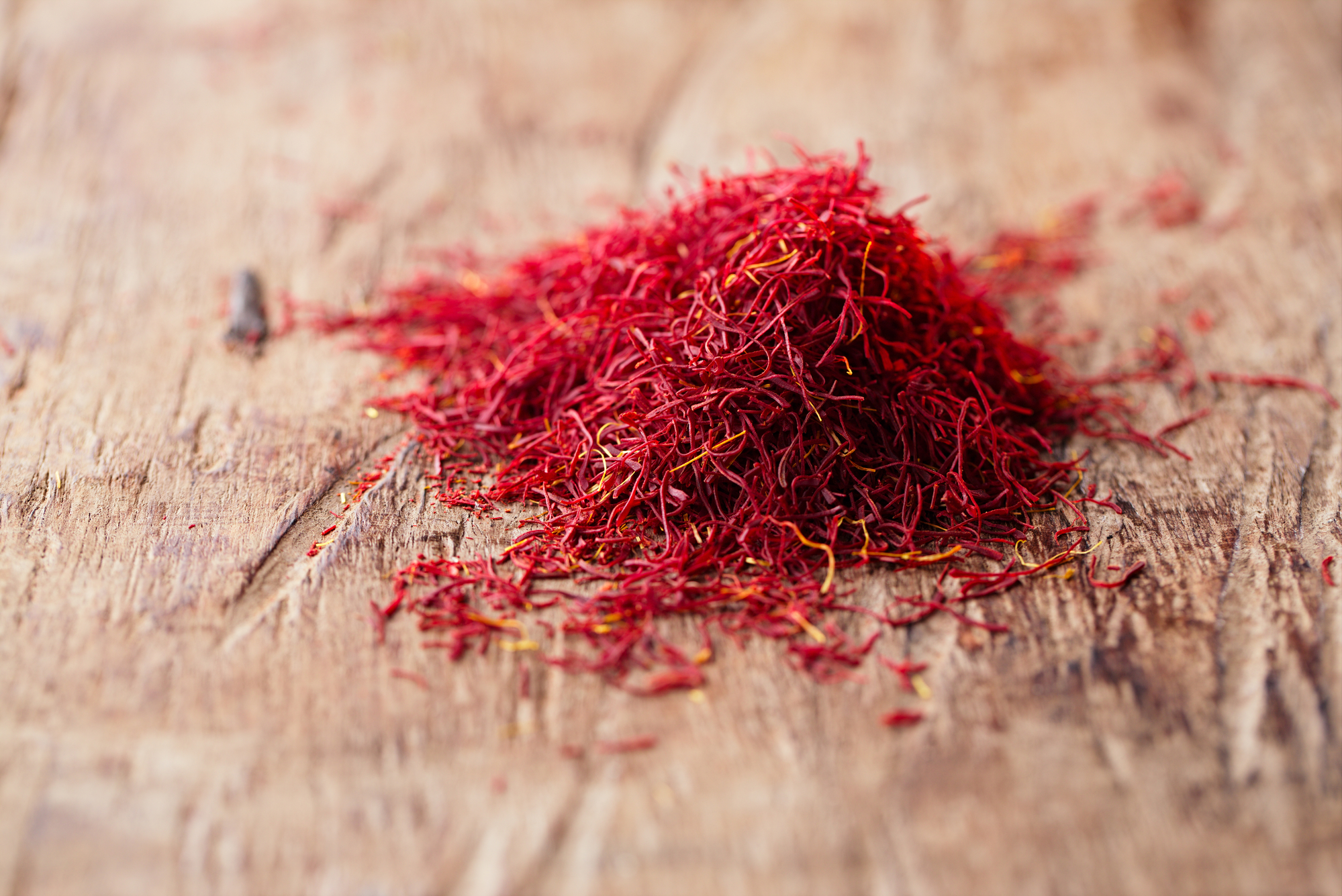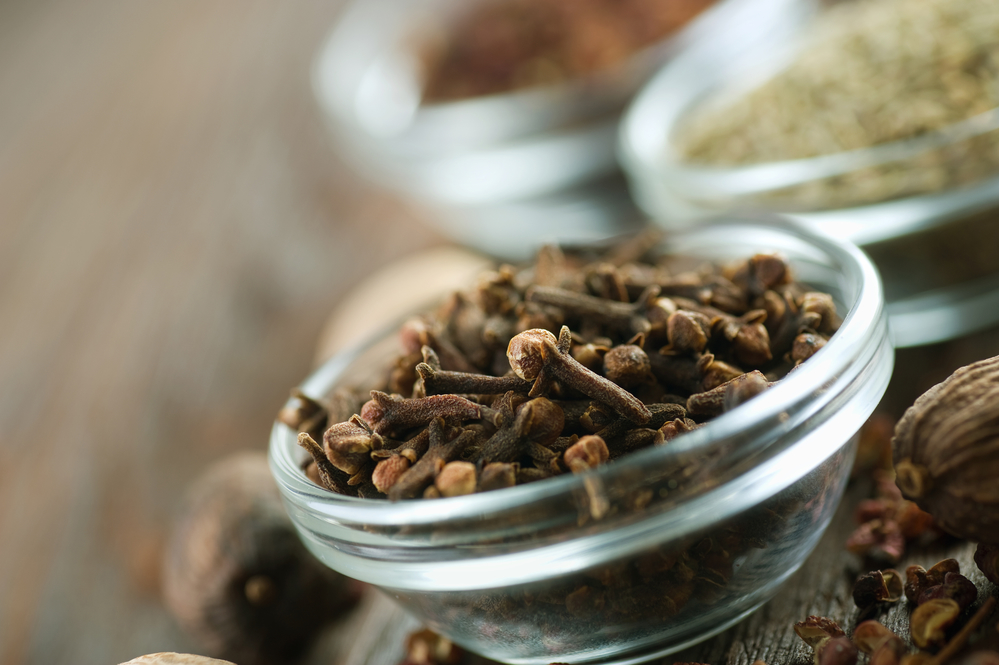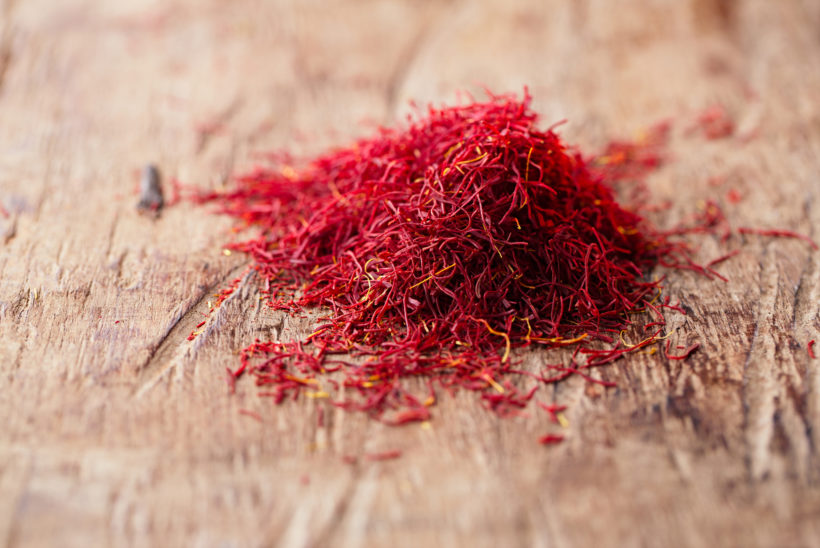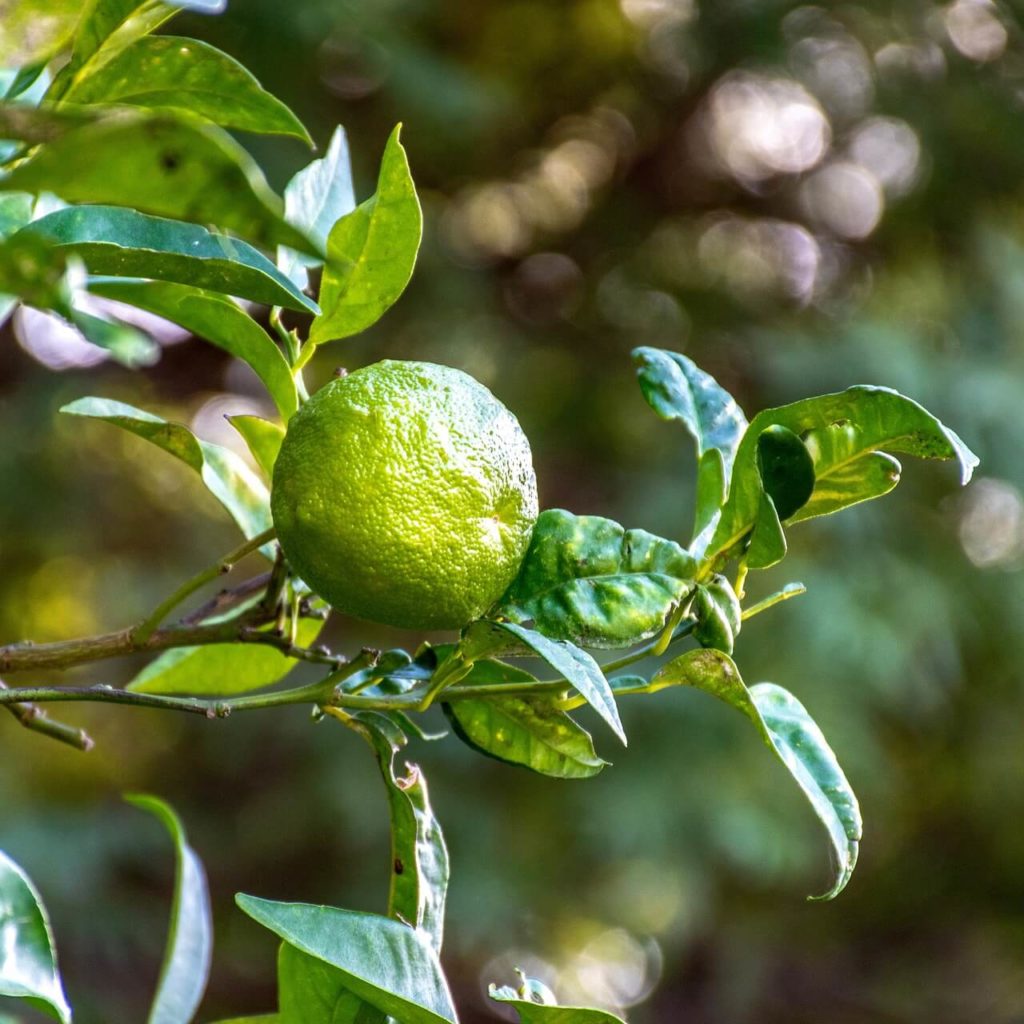Have you ever walked through the grocery aisle and wondered why certain spices are so expensive? Spices have been around for centuries, and their uses extended way beyond cooking purposes.
Many of the spices we use today have been used in ancient Egypt and China as a method of preserving beauty, medicinal treatments, and of course, adding flavor to foods.
In earlier times, the prices of spices that we commonly use today were above and beyond what a mind can imagine (some spices were even used for trading as money!), but as soon as new lands were explored and new trade routes opened up, prices went down.
Today, some spices are obtained at a high cost simply because of their nature and the way they’re harvested/cultivated.
(Updated 9/29/19) Here are the 13 most expensive spices in the world, their benefits, and common uses:
1. Saffron ($500-$5000 per pound)

The world’s most expensive spice originates from a flower called Crocus Sativus, which is native to Central Asia. It’s actually the stigma of the flower, and each flower has only three stigmas.
The high price of saffron comes from the laborious harvest work of picking the stigmas delicately by hand to prevent damage and leaving them to dry.
To collect a pound of saffron, it will require approximately 20 hours of labor and a number of flowers between 70,000 to 80,000 flowers.
It’s an Indian/Middle Eastern spice that has a floral, earthy taste and not too overpowering. Just one strand of saffron is enough to add a delicious flavor and a golden yellow color to your dish. That’s an advantage considering the price paid for it.
Besides cooking, saffron can be used in perfuming baths (if you’re feeling luxurious) and the extract of saffron had been used for a long time as a staining dye and in cosmetics, especially making red lipsticks.
It has many health benefits and can also be used as a medicinal narcotic
Best quality saffron originates from Kashmir, France, and Iran, which is considered the world’s largest producer of saffron.
It’s also cultivated in Greece, Italy, and India.
2. Vanilla ($50-$200 per pound)

‘Little pod’ is the meaning of vanilla, which accurately describes how a little of this powerful, overwhelming spice goes a long way. It’s added to many dishes, especially sweet treats and bakery.
The essence of vanilla, vanilla extract (unless it’s real), and artificial vanilla are all many companies’ attempts of copying the flavor of the vanilla pods but come nowhere near the pure natural taste.
They’re still a good substitute for those of us who want a delicious cake or drink with a hint of vanilla taste in it.
Vanilla is an expensive spice because they come from the orchids of the genus Vanilla flowers that have to be hand-pollinated and are harvested by hand shortly before they ripen, treated with water vapor and stored in an airtight container for 4 weeks to ferment.
Only fermented vanilla pods are used for trade, and these can reach a length of 30 cms.
Madagascar’s Bourbon vanilla beans are the most popular type of vanilla because of their rich, creamy flavor. This comes as no surprise as Madagascar is the world’s largest vanilla producer along with Mexico, where some of the best vanilla comes from.
Over the next few years, however, African vanilla plantations are expected to become a tough competition for Madagascar.
3. Mahlab ($68 per pound)

(Image via LinsFood)
Mahlab is a very rare spice that comes from the seed kernel of St. Lucie cherries. Southern Europe, the Middle East, and the Mediterranean region are native to these cherry trees.
It’s known as a variety of names including mahalab, mahleb, mahaleb, mahlep or mahalep.
Mahlab has a taste combination of floral, almonds, and cherries. This makes it a versatile spice that can be used in many recipes, especially baking bread and pastries from Greece to Iraq, which makes it quite similar to nutmeg.
Its floral taste makes it a tempting addition to dairy-induced recipes like rice pudding, as a substitute for rosewater, while its fruitiness is perfect for a heavenly creme brulee.
A pound of Mahlab can cost $68 as its process is time-consuming since the rock-hard cherry pits need to be cracked open and dried before they’re sold either as a whole seed or in powder form.
4. Long Pepper ($45 per pound)

Although long peppers were used heavily by ancient Greeks and Romans, it was bumped aside with the arrival of chili pepper. It’s still used, however, in India, Pakistan, and Nepal where it’s known as pippali.
It has a taste similar to black peppers, though the heat is toned down with hints of nutmeg, cinnamon, and cardamom.
Although they’re not easily sought out like black peppers, they’re a worthy addition to your kitchen pantry. If you’re already familiar with long peppers, you’re likely to be using the Indonesian piper retrofactum.
This is because its more commonly used compared to the Indian piper longum. Besides these two countries, Malaysia and Nepal are also cultivators of long peppers.
For cooking purposes, long peppers are used in the South Indian cuisine for making lentil stews and roasted meats. It’s also perfect for a barbecue as the smoky flavor pairs well with any type of meat: pork, beef, and lamb.
It also works well with roasting vegetables like asparagus, artichokes, and mushrooms, where it’s added as an aftertaste.
Alongside cooking, long peppers are used as a medicine to treat stomach-related problems, lung problems, headaches, improving appetite and digestion as well as stimulating menstrual flow.
It was also found to contain a chemical that stops your body from producing an enzyme that’s commonly found in tumors at an abundance.
5. Black Cumin Seed ($38 per pound)

Black cumin seeds, also known as black caraway, onion seeds, black sesame seeds, Kalonji, and Nigella seeds (coming from the name of the flower from which it’s produced ‘Nigella Sativa’), are native to Egypt, Iran, and North India.
It has a wide flavor pallet as it tastes like thyme, oregano, onions, and black peppers. Not to be confused with regular cumin though, as they’re thinner and darker with a much stronger flavor.
They’re widely used in cooking, especially by Indian and Middle Eastern cuisines, where they’re paired with bread and pastries. If you’ve had the chance to try Naan bread, then you definitely had a taste of these delicious seeds.
They’re also a great addition to classical dishes like curry or lentil soups.
Aside from cooking purposes, the oil of the black cumin seed oil is used in treating many medical conditions, which had been used by Middle Eastern and Asian healers for a long time.
It contains a chemical called thymoquinone, which has anti-inflammatory properties that can be used to treat inflammations on the skin and prevent the development of cancer cells, specifically pancreatic cancer.
6. Dried Kaffir Lime Leaves ($35 per pound)
Kaffir limes, also called citrus hystrix, are completely different from regular limes as they’re considered a wild lime variety. Although it has a bitter taste, its leaves are a fresh aromatic addition to your dish.
It adds a sweet citrus flavor to your cooking.
They’re grown in Australia, California, and Florida in the US, and tropical regions like India, Thailand, Malaysia, and Indonesia, which is why they’re also called Indonesian limes.
However, they’re mostly used as whole leaves in Asian cuisine, specifically Thai and Southeast-Asian, to add a special bold flavor to curries, salads, stews, and soups.
You can also slice them thinly and add them to spice pastes and as a topping to dishes like stir-fry. Fresh leaves contain the most flavor, while dried leaves are not as aromatic.
7. Grains of Paradise ($31 per pound)

(Image via Spiceography)
The West had a desire for Eastern spices, where most spices are cultivated and traded off, which reflected on the name given to these seeds ‘Grains of Paradise’.
It was so popular back in the 14th and 15th century that the Gulf of Guinea was known as the Melegueta Coast, after the Latin name of the plant (Afromum melegueta)
They’re also known as alligator pepper or Roman pepper.
Native to Ghana, Liberia, and Togo, these grains have a taste that can be closely related to ginger, turmeric, and cardamom. They have a warm, spicy, woodsy flavor than can be a flavorful substitute to black pepper.
It pairs well with summer dishes like grilled meats, fish and potato salads.
8. Cardamom ($30 per pound)

Cardamom has a strong flavor, which is why it’s known as the ‘Queen of Spices,’ and could be disliked by some people. Biting into whole cardamom is never a pleasant experience.
It’s native to India and used widely in their cooking, as well as in Middle Eastern and Arabic cuisine. It can be used as whole pods, seeds or ground.
Guatemala is the biggest producer and exporter of cardamom, closely followed by India.
It comes in 2 types: black or green.
Green cardamom is the most commonly used type, especially in cooking garam masala and curry dishes, along with sweetening desserts and beverage-making like coffee and teas. Black cardamom, on the other hand, is larger and has a minty, smoky flavor.
It has many medical benefits as it’s used to treat: digestive disorders, gum, and teeth infections, pulmonary tuberculosis, and eyelid inflammation.
9. Pasilla de Oaxaca Chile ($28 per pound)

Taking its name from the Oaxacan state in the South of Mexico, this medium-heat chile has a flavor profile that’s not too hot but leaves a lingering heat on the tongue.
It’s known for its incredible smoky flavor, which is the result of the harvesting process. The chiles are left to partially dry before harvesting and then they’re dried and smoked in large ovens over low heat for a few days.
Pasilla de Oaxaca Chile is best used in Latin style bean dishes, soups, sauces, and salsas. it’s also known among vegetarians as a resemblance of the smoky flavor of ham bacon without the fatty meat.
When making soups or bean dishes, you simply drop a chile into your pot and remove before serving, similar to a bay leaf.
10. Cloves ($10 per pound)

A spice that has been around since the middle ages for trading, medicinal, and cooking purposes.
It’s native to Indonesia (which produces 70-80% of the world’s population), particularly the Maluku Islands, but also grows in India, Madagascar, Pakistan, Zanzibar, and Sri Lanka.
Because it’s obtained from florid buds of an exotic tree ‘Caryophyllus Aromaticus’ (related to myrtle and eucalyptus), it has an aromatic flavor that’s used in the making of perfumes and other fragrances.
More than half of the cloves produced in Indonesia are used to make special aromatic cigarettes called Kretek.
Medical uses of cloves include relieving toothaches, as it has an active ingredient called Eugenol, which is a natural anesthetic and has anti-inflammatory properties.
11. Cinnamon ($6 per pound)

A spice that comes from the bark of the Cinnamomum tree that’s native to Sri Lanka (world’s biggest producer), India and Indonesia.
It’s one of the oldest spices used in ancient Egypt and China and was considered one of the most expensive spices in the world between the 16th and 18th centuries.
Ceylon cinnamon is more expensive and less commonly used than Chinese cinnamon (Cassia), which is added to many beverages like coffee, tea, hot cocoa, and even wine.
It also adds a lot of depth to curry dishes.
Other purposes include curing a common cold, freckles, snakebites and kidney troubles, as well as food processing and aromatherapy.
12. Black Pepper ($3 per pound)

The ‘King of Spices,’ black pepper is a spice that’s usually found on our dining tables and in our pantry, generously used in seasoning a wide variety of food.
Peppercorns are dried berries that come from the vine Piper nigrum, and they have a sharp, mildly spicy flavor.
It’s cultivated in South India and in tropical regions like Vietnam, which is currently the largest producer of black pepper in the world.
It was once a very expensive spice, and peppercorns were used as valuable trade food and were known as ‘Black Gold.’
Black pepper is high in antioxidants, has anti-inflammatory properties, and can help lower cholesterol levels. It also boosts the absorption of nutrients, can improve gut health and has cancer-fighting properties.
13. Turmeric (3$ per pound)

Closely related to the ginger family, turmeric is a spice that’s mostly used for its color rather than the way it tastes. It has been used for ages as a dye or food coloring in Asia, while it was more specifically used for medicinal purposes in India.
It’s mostly grown and exported from India, but it also grows in China, Vietnam, and Peru.
In cooking dishes, turmeric’s earthy, gingery flavor doesn’t add much to your food except giving it a golden color. So if you’re making curry or a masala, this spice will be a flavorful addition.
In A Nut(meg) Shell
These are just some of the different spices that aren’t commonly used in cooking, and if used, aren’t in their real natural form like vanilla.
It may seem like a huge investment; however, they can elevate a typical dish and make it look like it was made by a professional chef that uses the fanciest of ingredients.
Using it scarcely, as a little goes a long way, and hiding it at the back of your pantry from others in your house, will make sure your investment is properly and wisely used.
Besides cooking, these spices are great to be used as alternative medicine as many have medicinal properties that can substitute chemicals in medicines.
Spicy For Entrepreneurs
If you’re like me, you quickly want to become a saffron farmer and ‘rake’ in some hot cash. Not so fast, these spices are expensive for a reason.
Saffron and other high ticketed spices are very hard to cultivate and harvest, but if you are up for the challenge, you can read about profiting from saffron here. Maybe you will develop a revelationary way to make harvesting a less intensive process, which can become highly profitable.
With the current health and beauty trends moving to natural ingredients, there is also a big opportunity to utilize such spices in makeup & skincare.
Spice up your life ~



